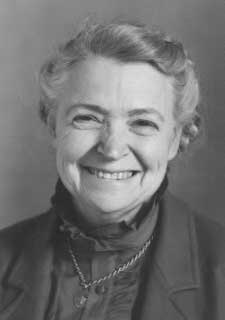Mildred Dresselhaus: Difference between revisions
No edit summary |
No edit summary |
||
| Line 1: | Line 1: | ||
== Mildred Dresselhaus == | == Mildred Dresselhaus == | ||
Born: 11 November 1930 | Born: 11 November 1930 | ||
| Line 13: | Line 11: | ||
<br> | <br> | ||
[[Category:People_and_organizations]] [[Category:Scientists]] [[Category:Engineered_materials_&_dielectrics|Category:Engineered_materials_&_dielectrics]] [[Category:Elements]] [[Category:Carbon]] [[Category:Engineering_profession]] [[Category:Engineering_education]] [[Category:Electrical_engineering_education]] | |||
[[Category:People_and_organizations]] [[Category:Scientists]] [[Category:Engineered_materials_&_dielectrics|Category:Engineered_materials_&_dielectrics]] [[Category:Elements]] [[Category:Carbon]] | |||
[[Category:Engineering_profession]] | |||
[[Category:Engineering_education]] | |||
[[Category:Electrical_engineering_education]] | |||
Revision as of 15:46, 23 January 2009
Mildred Dresselhaus
Born: 11 November 1930
Mildred Dresselhaus was born Mildred Spiewak in the Bronx, New York on 11 November 1930. Raised in an
impoverished household, she overcame the odds and received a high quality education, becoming a pioneer in the field of solid-state electronics.
As a student Dresselhaus showed a keen interest in mathematics and music. She attended Hunter College in New York under a state scholarship, and continued her mathematics education. But science, a field that had held little interest for her before, suddenly became Dresselhaus’ major concentration after some encouragement from a helpful physics teacher. Finding great enjoyment in science, she earned her degree in it (with high honors) in 1951. She continued her studies at the graduate level in Cambridge, England for a year under a Fulbright scholarship before returning to the U.S. to finish her degrees at Radcliffe College and then the University of Chicago. It was during her graduate school years in Chicago that she began to study superconductors, a subject that became the focus of her doctoral thesis. At that time, superconductors were one of the “hottest” fields in solid-state physics. It also brought her into contact with her future husband, Gene Dresselhaus, another researcher in the solid-state area.
Two years after her graduation and marriage in 1958, Gene and Mildred Dresselhaus were both offered faculty positions at MIT. Her research led to advances in carbon-based materials used in solid-state electronics. In part because of the high quality of her research and teaching at MIT, she was promoted to Professor in 1968. . She has received many honors and awards, such as the National Medal of Science (1990). Dr. Dresselhaus still teaches at MIT.
